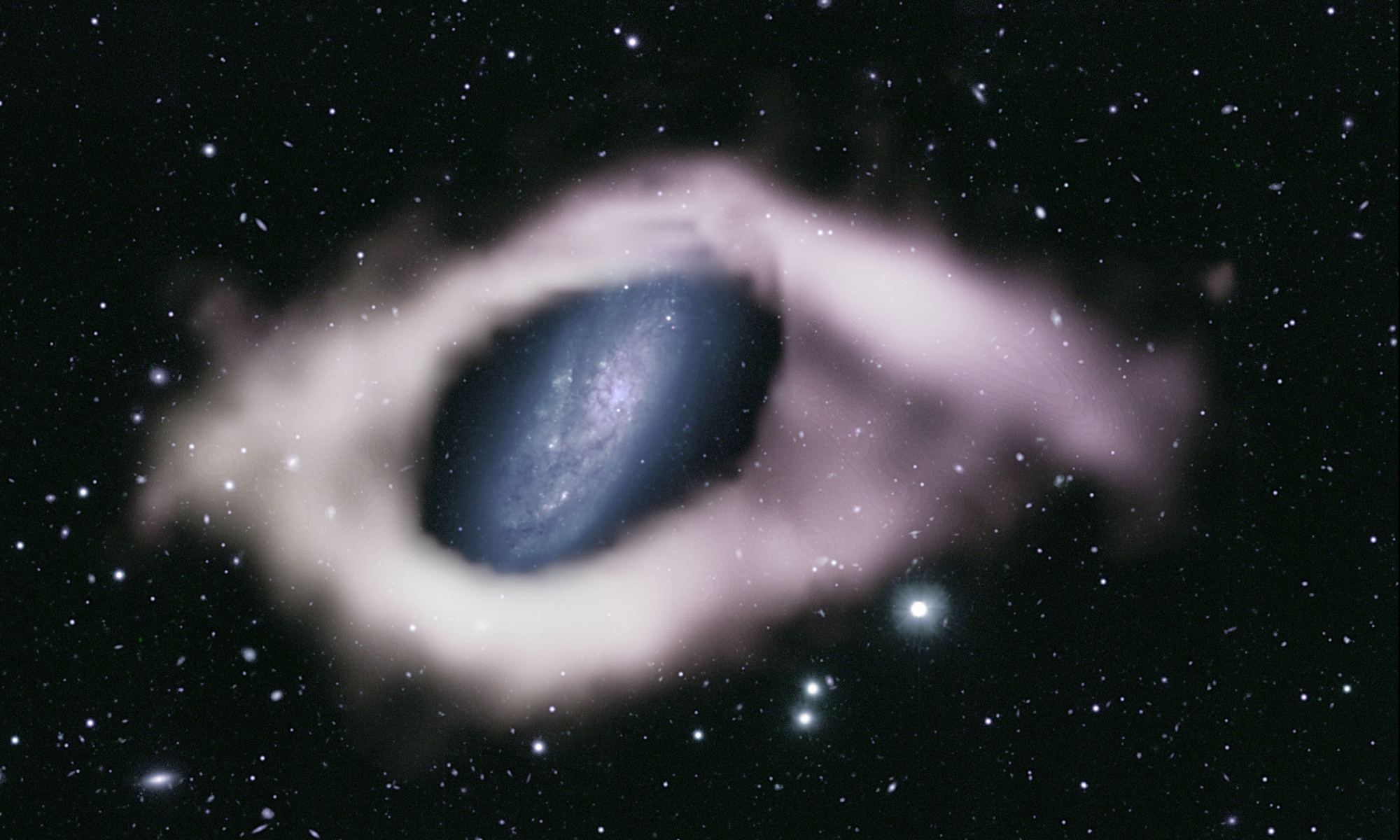Galaxies come in a range of shapes, from elegant spirals to egg-shaped ellipticals. We often categorize galaxies by their shape, which was traditionally done based on what we could observe in the visual spectrum. But as we expanded astronomy into radio, infrared, ultraviolet, and x-ray light, learned that often galaxies have structures invisible to our eyes. Take, for example, an odd type of galaxy known as polar ring galaxies (PRGs).
A polar ring galaxy is a spiral or elliptical galaxy with an outer ring of gas and stars tilted roughly perpendicular to the galactic plane. The ring encircles the galaxy over its polar regions, hence the name. Often the ring is primarily diffuse hydrogen gas, which can only be seen at radio wavelengths.
Polar ring galaxies were first discovered in 1978, and we still don’t understand how they form. One idea is that the ring is a by-product of galactic collisions. If the original galaxies collide at dramatically different angles, the hydrogen from them could be cast off in a polar alignment. For this reason, polar ring galaxies were thought to be rare. But a new survey of galaxies suggests PRGs are relatively common.

The results were published in the Monthly Notices of the Royal Astronomical Society, presenting some initial results of the WALLABY pilot survey. WALLABY, or the Widefield ASKAP L-band Legacy All-sky Blind surveY, is a project to create a high-resolution map of neutral hydrogen in the Southern Hemisphere sky. The survey is detailed enough to capture not just intergalactic gas, but also the hydrogen surrounding galaxies. The initial stage of WALLABY mapped hydrogen around 600 galaxies and found that two had polar rings.
Statistically, this means about 1% – 3% of the galaxies WALLABY surveys will be polar ring galaxies. When the survey is complete, WALLABY could discover hundreds of these galaxies. Currently, less than a dozen SRGs are confirmed. With such a significant jump in data, astronomers will better understand how these strange galaxies form and evolve. They may even play a significant role in understanding how dark matter interacts with galaxies.
Reference: Deg, N., et al. “WALLABY pilot survey: the potential polar ring galaxies NGC 4632 and NGC 6156.” Monthly Notices of the Royal Astronomical Society 525.3 (2023): 4663-4684.

